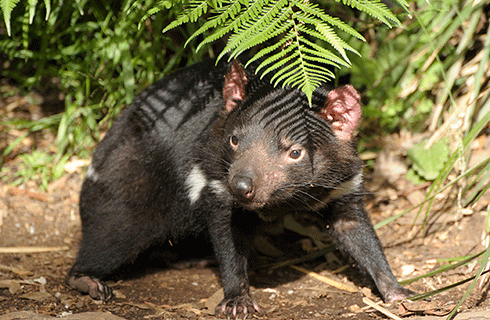
|
Published: 10 November 2014
Devils have survived episodes of gene poverty over millennia
New research has found that Tasmanian devils have already survived two major population declines in the last 50,000 years, and suggests climate change, not modern human activity, has been responsible for the low genetic diversity seen in devil populations today.

|
|
Climate, not human activity or disease, may be the cause of low numbers – and low genetic diversity – among wild populations of Tasmanian devils. Credit:
©istock.com/JohnCarnemolla
|
The research, published in the journal Biology Letters, was carried out by Anna Bruniche-Olsen, Dr Menna Jones, Dr Chris Burridge and Dr Barbara Holland from the University of Tasmania (UTAS)and Associate Professor Jeremy Austin from the University of Adelaide.
Using the largest genetic dataset compiled for devils so far, the research team ruled out two widely accepted causes of low genetic diversity observed in the species today: extensive bounty hunting following European settlement of Tasmania; and Devil Facial Tumour Disease (DFTD), the transmissible cancer responsible for an 80 per cent decline in devils since it was discovered in 1996.
Instead, environmental changes prior to or during the last glaciation (around 20,000 years ago) and an increased El Nino–Southern Oscillation (ENSO) around 3000–5000 years ago –which led to a drier climate – appear to have caused substantial population declines and subsequent loss of genetic diversity.
The findings indicate that climate has been the key factor in reducing the devil population and will continue to endanger the animals if, as current climate predict, Australia becomes hotter and more arid.
The low genetic diversity, combined with the spread of DFTD, has raised serious concerns for the species' long-term survival.
Lead author, PhD student Anna Bruniche-Olsen, said the devil population used to be widespread in Australia but is now restricted to Tasmania.
‘Using DNA markers from more than 300 devils combined with modern statistical methods, we inferred past population dynamics of the species,’ she said.
Co-investigator, Assoc. Prof Barbara Holland, commented: ‘The work is a good illustration of how biologists these days need to be increasingly adept with mathematical and statistical techniques to be able to answer questions of this nature.’
Source: UTAS



